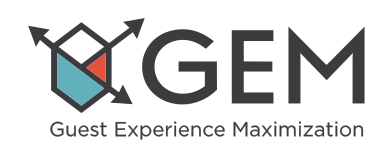The Employee Experience and Focusing In On It

Here is a riddle for everyone developing products aimed at the experience industry and beyond: When is improving the guest experience not directly about the guests, but about the employee experience?
Answer? It’s when improving the experience is about the employees that execute it. Companies certainly know the importance of improving the guest journey. The most successful incorporate the data collected during the experience in a continual cycle of refinement. But that same thought is not always put into the experience of the team members who will use the tools and implement the programs on behalf of the guests.
The guest experience typically flows from the technology used by the employees — whether it be a POS system or contact tracing app or Carnival Cruise Lines Ocean Medallion program. But whenever a new tool or process is developed, the danger is that it will only make sense to the designers — not the employees that use the systems. To be successful, the designers have to keep the end-user in mind.
In Forbes, Emily He writes that hospitality brands, which live and die based on the guest experience, especially, can benefit from a focus on the employees, too:
… Hilton has realized that employee experience is just as important as customer experience. It’s refreshing to see since so many organizations focus on the customer experience first, and the “back office” tends to get left behind.
Start with Design

At GEM, we specialize in creating tailor-made guest experience solutions that address the needs of all stakeholders in the process, including the employees who use the systems. So, our approach starts by incorporating the end-user’s perspective at the design level. This can mean interviewing employees and executives at all stages of the organization. In the case of a cruise line setting, this could mean the captain of the vessel, the crew captain, chefs, stewards, bartenders, and administrative staff, as well as doctors, nurses, and other members of the medical team.
It’s important to consult subject matter experts. This could be someone well-versed in hospitality who could actually describe the experience and expectations of the employee in any given situation. They don’t have to be IT experts, but they should know the pain points that the appropriate team members can experience. The designer, the person creating the hardware and software for the project, uses the input of the subject matter expert and then designs and presents a prototype tool that should be able to better support the crew experience.
Training

The next step in optimizing the employee experience is properly introducing the product to the team members who will use it. The system must be easy to learn, so what should the training and implementation look like? It benefits no one if the training simply involves emailing a PDF of instructions to a team member, and they end up embarrassing themselves in front of the guests. It causes friction for their experience and for those they are trying to accommodate. It’s better to have trainers on hand to explain the new systems, ensuring that the team members can proficiently use them.
Change Managment

How do you introduce these new tools and processes into the workplace? Properly managing change is a component of the employee experience, too. When launching a new product, it is important to generate buy-in right out of the gate. Employees can’t be forced to like using the new system, but you can certainly market it to them. The solution to overcoming resistance, the tendency to push back on the new, is making sure that team members feel like part of the process. Instead of just being told to use the tool, they need to be educated about how it will make life easier for both them and the guests.
Respecting the status of employees as stakeholders in the development process goes a long way towards creating a successful product. Relying on subject matter experts in the industry — whether hospitality, tourism, recreation, or food and beverage — will ensure the systems meet everyone’s needs.



